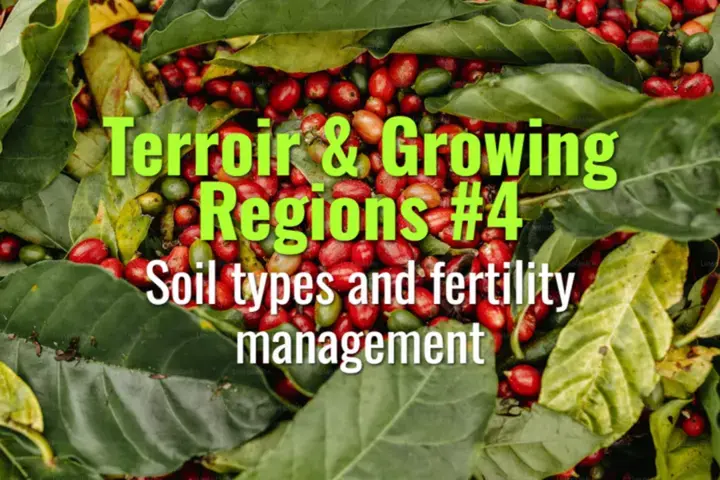Soil types and fertility management
This topic explores the main soil types suitable for coffee cultivation, how soil fertility influences plant health and cup quality, and the management practices farmers use to sustain productive soils.
- Coffee Basics Nerds
- 2 min read
Article 4 of 12 in Terroir & Growing Regions/

Soil Types in Coffee Cultivation
- Volcanic soils (Andisols): Found in regions like Central America and East Africa; rich in minerals, well-drained, high organic matter—ideal for Arabica.
- Red lateritic soils (Oxisols, Ultisols): Common in Brazil and parts of Africa; weathered, acidic, often low fertility but improved with liming and fertilization.
- Sandy loams: Good drainage but require organic amendments to retain nutrients.
- Clay soils: Hold water well but risk compaction and poor aeration; careful management needed.
- Alluvial soils: Found in valleys and river basins, fertile but may need drainage control.
Key Soil Characteristics for Coffee
- pH range: Optimal 5.5–6.5 (slightly acidic).
- Drainage: Well-drained soils prevent root rot.
- Organic matter: Enhances nutrient availability and water retention.
- Depth: Deep soils (>1.5 m) allow robust root development.
Fertility Management Practices
- Soil testing: Identifies nutrient imbalances (N, P, K, Mg, Ca, micronutrients).
- Organic amendments: Compost, manure, mulch improve structure and microbial activity.
- Fertilizer programs: Balanced NPK applications tailored to growth stage (N for vegetative growth, K for fruit filling).
- Liming: Corrects acidity and supplies calcium and magnesium.
- Shade and cover crops: Reduce erosion, recycle nutrients, and enhance soil health.
Soil–Flavor Connection
- Volcanic soils: Often linked to bright, complex acidity and floral-fruity notes.
- Mineral-rich soils: Support higher bean density and sweetness.
- Poorly managed soils: Lead to nutrient deficiencies, weaker plants, and reduced cup quality.
Climate Change Considerations
- Heavy rains may cause leaching of nutrients.
- Drought increases need for organic matter to retain soil moisture.
- Sustainable soil fertility management becomes crucial for resilience.
Lasting Importance
Soil types and fertility management form the foundation of coffee terroir. Healthy, balanced soils not only support yield but also enhance flavor potential, making soil stewardship a critical aspect of sustainable coffee farming.
You might also like:
- Tags:
- Lasting Importance
- Cup Quality
- Organic Matter
- Climate Change
- Coffee Farming
- Calcium Magnesium
- Central America
- Microbial Activity
- Coffee Cultivation
- Soil Health
- Soil Fertility
- Floral Fruity
- Flavor Potential
- Sustainable Coffee
- Bean Density
- Cover Crops
- Compost Manure
- Volcanic Soils
- Acidity Floral
- East Africa
- Fruity Notes
- Poorly Managed
- Soil Moisture
- Water Retention